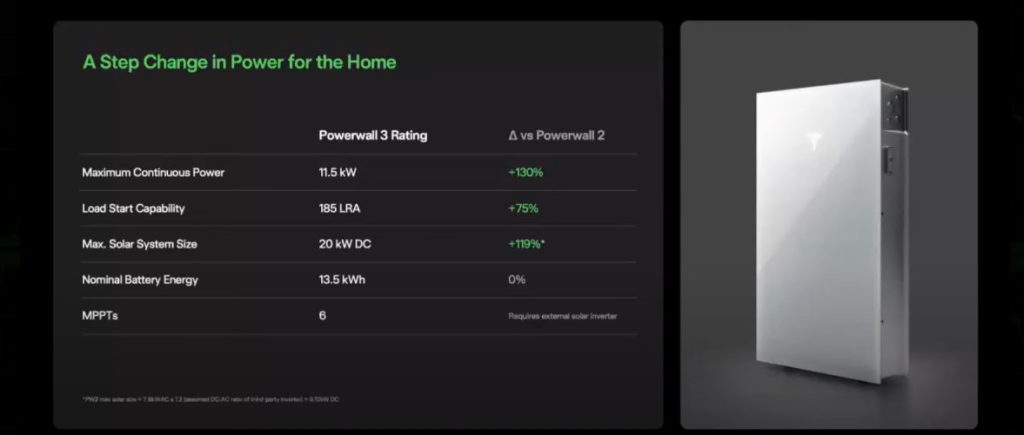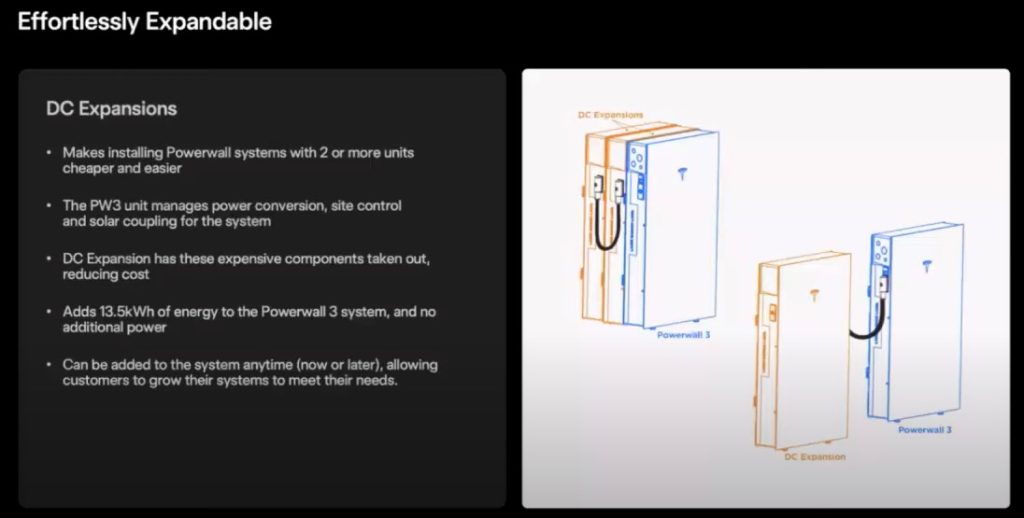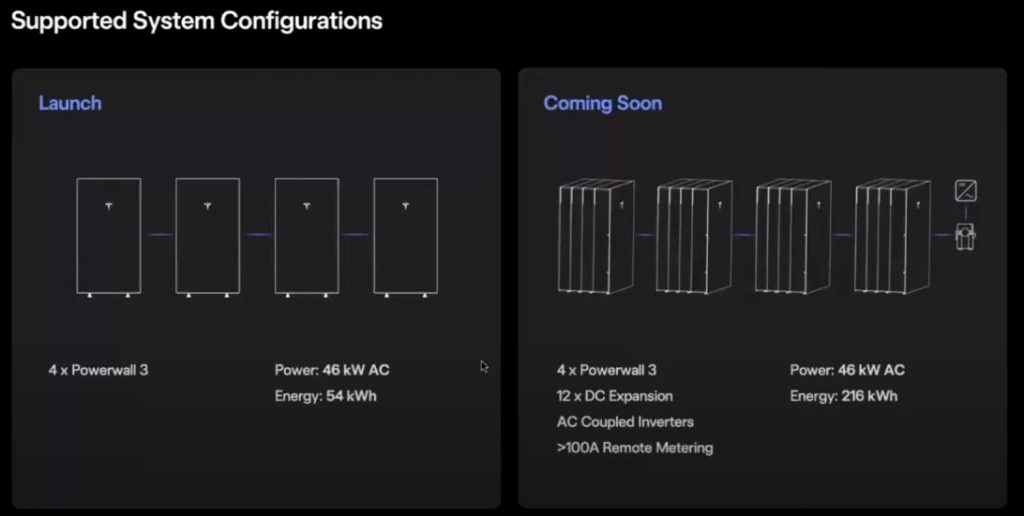
Tesla has released more details about Powerwall 3, its new generation home energy storage system, and there’s some more good news.
Electrek first reported that Tesla started Powerwall 3 installations in the US despite having yet to launch the product on its website officially back in September.
As we previously reported, the biggest difference with the Powerwall 3 is a higher power output of 11.5 KW continuous and an integrated solar inverter.
Tesla CEO Elon Musk later confirmed that the new Powerwall 3 also has a massively impressive peak power output of 30 kW.
The company continued to use both the Powerwall 2+ and the Powerwall 3 based on what made the most sense for each installation and as it ramps up the new unit.
But these are just some of the improvements that the new Powerwall 3 is bringing. Tesla is still working on a few more things enabled by the Powerwall 3 technology.
Tesla has now produced a webinar for its installers about the new Powerwall 3 that revealed a few more interesting details.
Again, there’s no doubt that the power and load capacity is the biggest upgrade of Powerwall 3:

Most Powerwall 2 installations involved more than one unit, but that had to do more with the power limitations than the energy capacity. Households needed more continuous power capacity to run critical electric equipment on the battery pack.
With the same 13.5 kWh energy capacity, a single Powerwall 3 can power an average household for hours.
For those who need more energy capacity, Powerwall 3 is also going to be easier and cheaper to stack.
Tesla says that it is working on a new version of the Powerwall 3 without power inverter components to stack with a full Powerwall 3.

This new capacity means that you can combine 4 Powerwall 3s together for a power capacity of 46 kW and energy capacity of 54 kWh, but that’s a weird power-energy mix that is not ideal for most projects.
However, this upcoming new stackable units without power inverter, which Tesla calls ‘DC Expansion’, means that you can do a different configuration focused on adding more energy capacity:

A single of these units on the right (one full Powerwall and 3 ‘DC expansions’) would theoretically have a continuous power capacity of 11.5 kW and an energy capacity of 54 kWh.
Top comment by Don Miller
Great that LFP is confirmed. Despite the good safety record I would not put NMC chemistries indoors. Plus the LFP packs may last a couple decades maintaining most capacity in daily use.
The upcoming DC Expansion unit is going to be $1,000 cheaper than the Powerwall 3, which is listed at $9,300 before incentives.
In the webinar, Tesla also confirmed that Powerwall 3 is using LFP battery cells, like its Megapack.
The less energy-dense battery chemistry is ideal for stationary energy storage projects as it offers better longevity.
Tesla currently offers $500 off Powerwall orders if you place the order with a referral code. The energy storage unit is also eligible to the 30% tax credit.
FTC: We use income earning auto affiliate links. More.







Comments